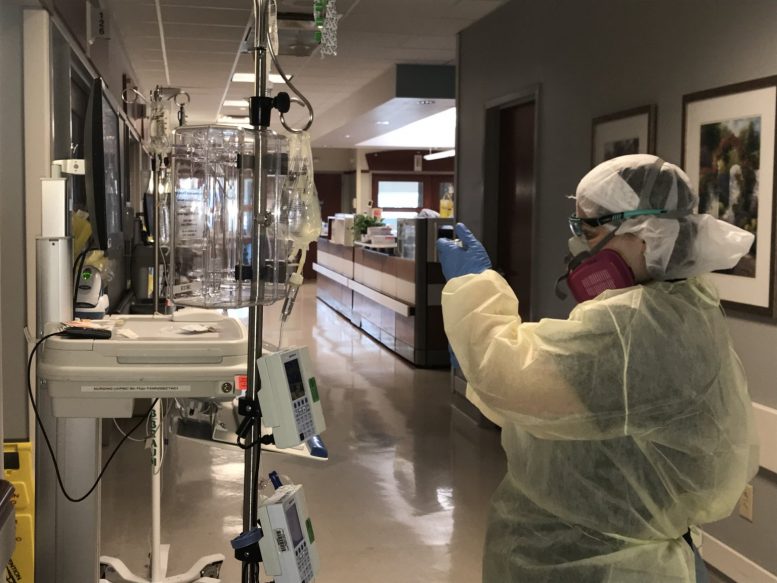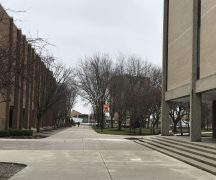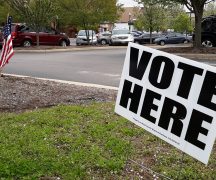For many of us, getting vaccinated means freedom from the tyranny of the coronavirus.
We now can go hang indoors with our vaccinated friends and not bother with masks in most settings. We can even touch each other without a panicked search for the nearest bottle of hand sanitizer.
Getting vaccinated also seemed a liberation from endless, mindless culture wars.
Wear a mask. Don’t wear a mask. Get vaccinated. Don’t get vaccinated. What do I care? I’m safe.
But rumbling in the background are thousands of reasons why we should care — if we want to consider our neighbors in addition to ourselves.
In addition to the hundreds of thousands or millions of Ohioans who refuse to be vaccinated are thousands and thousands more who, when they get vaccinated, the shot appears to be ineffective.

Earlier this month, The U.S. Centers for Disease Control and Prevention abruptly and controversially changed its guidance to say that fully vaccinated people don’t need to wear masks except in healthcare settings and on public transit. The agency recommended that unvaccinated people continue to cover their faces.
Ohio Gov. Mike DeWine quickly followed suit, amending Ohio health orders to fit with the CDC guidance. He had already promised to end all coronavirus health orders on June 2.
But then the Washington Post last week reported on a population that the new orders will only drive further into the shadows. Those are the millions of Americans who have had transplants or have other conditions that require them to take immunosupressant drugs or who have diseases such as AIDs that compromise their immune systems.
Their defenses are already weakened, and the vaccines might not give them much protection from the deadly disease.
Eddie Hamilton, 58, is a two-time cancer survivor who also suffers from AIDs, the disease caused by Human Immunodeficiency Virus. He got the one-dose Johnson & Johnson vaccine on March 8.
“Then I figured I’d go for an antibody test and I came up blank,” the Columbus AIDs activist said.
That was alarming because Hamilton consulted with his doctor and waited until his vaccinated body had time to produce coronavirus-fighting antibodies. The lack of a response is something that’s been seen with many AIDs, cancer and transplant patients, the Post reported.
It’s not clear if the absence of antibodies means a person is completely vulnerable to the coronavirus. Hamilton’s doctor and other scientists have said effects of the vaccine other than antibody production might be protective.
As they raced to develop safe, effective vaccines for the general population, researchers excluded immunocompromised people like Hamilton from their clinical trials, although piecemeal research is now underway.
“So what in the hell am I supposed to do in the meantime?” Hamilton asked. “Are they basically going to keep us on house arrest?”
Hamilton only recently has started venturing into indoor public settings such as the grocery store, masking heavily and going late in the evening when it’s not going to be crowded.
“You just assume everybody’s transmissible,” he said.
So far, big chains such as Kroger are maintaining their mask orders. But in the absence of a state order there might be slipping compliance and Hamilton is questioning whether he’ll go back — or simply hunker further down in his home.
He’s far from alone in being forced to be alone. There are more than 25,000 people with HIV/AIDS in Ohio and the Post estimated that 3% to 4% of Americans suffer immune-weakening conditions of all types. In Ohio, that could be almost half a million people.
DeWine’s office was asked if those numbers prompted the governor to question the wisdom of the CDC order, or if they caused him to rethink his own decision to eliminate health orders. DeWine’s spokesman didn’t address Ohioans for whom the vaccines might not be effective.
“For most Ohioans moving forward, the vaccine will be protecting them from the virus instead of masks and distancing,” Press Secretary Dan Tierney said in an email. “The CDC still recommends masking and distancing for those who have not been vaccinated, and the Governor strongly echoes that recommendation.”
Tierney also said: “The June 2nd date for orders expiring reflects that we have now had a significant number of Ohioans vaccinated which is dramatically decreasing COVID case rates and that Ohioans have had a significant amount of time to get the vaccine, with supply now outpacing demand. The June 2nd date also reflects providing Ohioans who are not vaccinated a reasonable period before mask and distancing protocols were removed.”
The state’s not going to make you. But until a lot more is known about whether vaccinated people can spread the virus, the community-minded thing might be to keep masking up in settings like grocery and convenience stores.
You can’t know if you’re hurting the person next to you if you don’t.
***
Also from Ohio Capital Journal:
COVID vaccination rates jump; new infections wane
The rate of Ohio’s COVID-19 vaccine rollout leapt over the past 10 days, after roughly six weeks of steady decline.
The trend likely traces back to a combination of the state’s novel “Vaxamillion” lottery drawings, and the federal government authorizing the use of vaccines on children aged 12-15.
Meanwhile, the pace of new infections has gradually slowed down. About 5,300 Ohioans were infected in the week ending May 19 compared to about 14,000 new infections the week ending April 7.
A review of Ohio Department of Health data shows the rate of Ohioans starting the vaccination process nosedived between early April and May 12. At that point, health officials greenlit vaccinations of the younger Ohioans, contributing to some of the recent flurry of immunizations. READ MORE





